Arriving just in time for World War II, two American guns shared a name and a critical role in victory: the M1 Garand rifle and the M1 carbine.
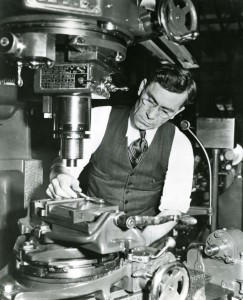
John Garand, inventor of the semi-automatic M1 Garand rifle, works in his shop in 1940.
The firearm known simply as the M1 Garand or just Garand was the primary rifle of the US armed forces during World War II. (National Archives)
John Garand demonstrates how to load a clip of eight cartridges into the M1 Garand.
(National Archives)
The M1 Garand had metal protective bumpers on the front and rear portions of its gun sight
to protect them if the rifle was dropped. This model was manufactured in 1952 by
International Harvester in Evansville, Indiana. It is identical to 1944 models made at the Springfield Armory in Massachusetts. (Courtesy of Bill Jackson)
A color photo shot with artistic license features a model wearing an old WWI doughboy
helmet holding an M1 Garand and posed next to a half-track. (Library of Congress)
Army instructors taught their GIs four firing positions. The three besides prone–demonstrated here by a marine aiming his M1 Garand–are standing, kneeling, and sitting. (Library of Congress)
Jimmy Stewart portrayed David Marshall Williams in the movie Carbine Williams, that told the strange but generally true tale of Williams refining his design for the M1 carbine while he was a prison inmate (note the men in jail togs). Though the Garand and carbine shared the designation M1—which means simply “Model 1” and was applied to many items besides these–they were different guns with different backgrounds.
General Dwight Eisenhower, Prime Minster Winston Churchill, and General Omar Bradley take some test shots with M1s carbines in England in May 1944. Carbines were often given to truck drivers and other support personnel who were not on the front lines, who needed lighter, more compact weapons.
Playing General Merrill in the 1962 movie Merrill’s Marauders, Jeff Chandler carries an M1 carbine. Note the sling, which helped the soldier carry the gun and also provided some steadying support when firing.
An M1 carbine hangs from the shoulder of a soldier of the 347th Infantry Regiment as he stoops at the front of a chow line to get a meal en route to La Roche, Belgium, in January 1945. (National Archives)
The paratrooper’s M1 carbine was extra-lightweight and had a folding stock that made it easier to pack. (Courtesy of Bill Jackson)
A still from the 1955 Audie Murphy biopic To Hell and Back shows an M1 carbine in the hands of the highly decorated WWII hero and postwar film actor.

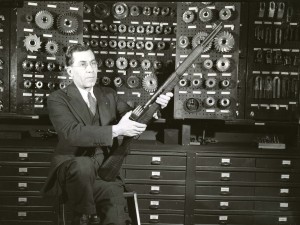
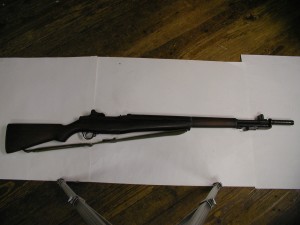
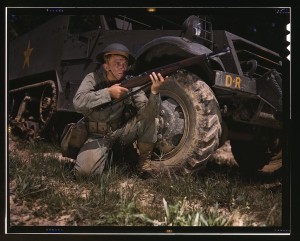
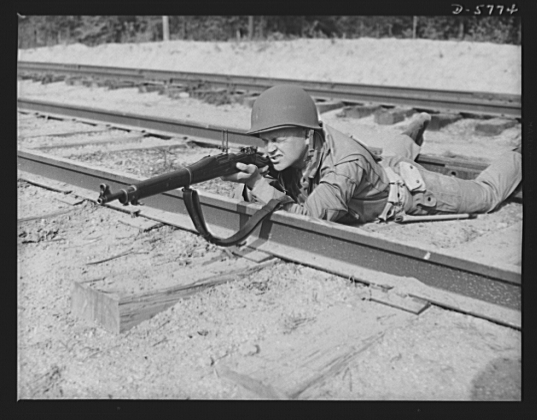
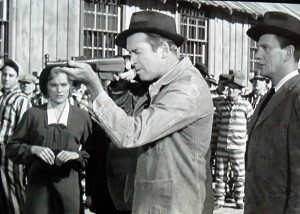
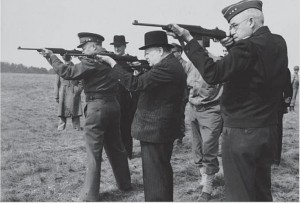
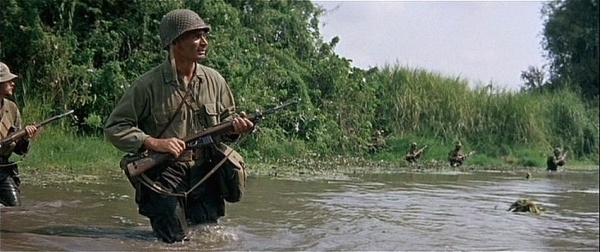
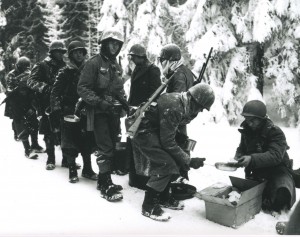
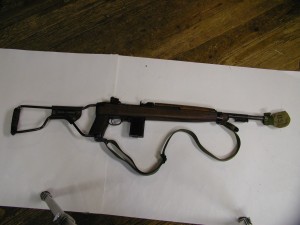
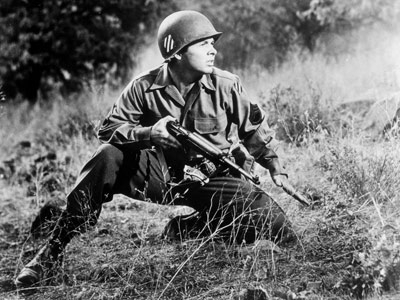

FOLLOW US »
